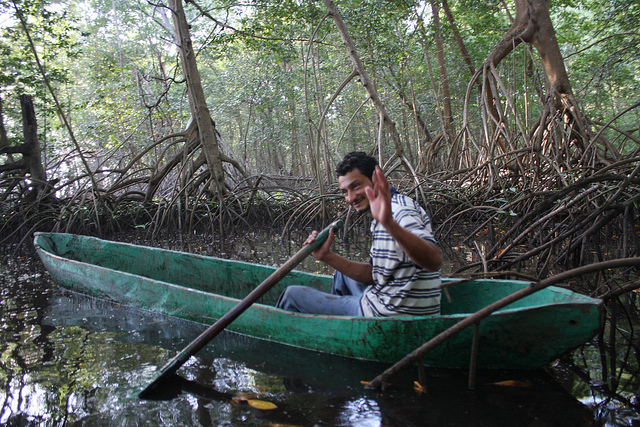
Amongst the ecologically fragile mangroves of La Tirana, Jiquilisco. Photo © Trocaire, licensed Creative Commons Attribution.
One of the most important functions of the mangrove forests is that they are highly effective carbon sinks. They absorb carbon dioxide, taking carbon out of circulation and reducing the amount of the greenhouse gas in the atmosphere. Coastal wetland areas like Bahía de Jiquilisco can sequester up to four times more carbon dioxide per hectare than rainforests, making them one of the earth’s best carbon storage facilities, a major natural bulwark against worldwide climate change. Their location on the coast, however, also makes them one of the most vulnerable areas in terms of the effects of climate change.
As climate change accelerates, more and more natural disasters are hitting coastal areas, including hurricanes, tropical storms, floods, and landslides. Longer periods of drought, coupled with storms that are more intensive during the rainy season, threaten to wipe out crops each year. Half of the world’s mangroves have disappeared in recent history, and with the current global rate of greenhouse gas emissions, their protection is especially critical, not only for people but for all the other species who thrive in this habitat.
Excerpted from the First Edition of Moon El Salvador.